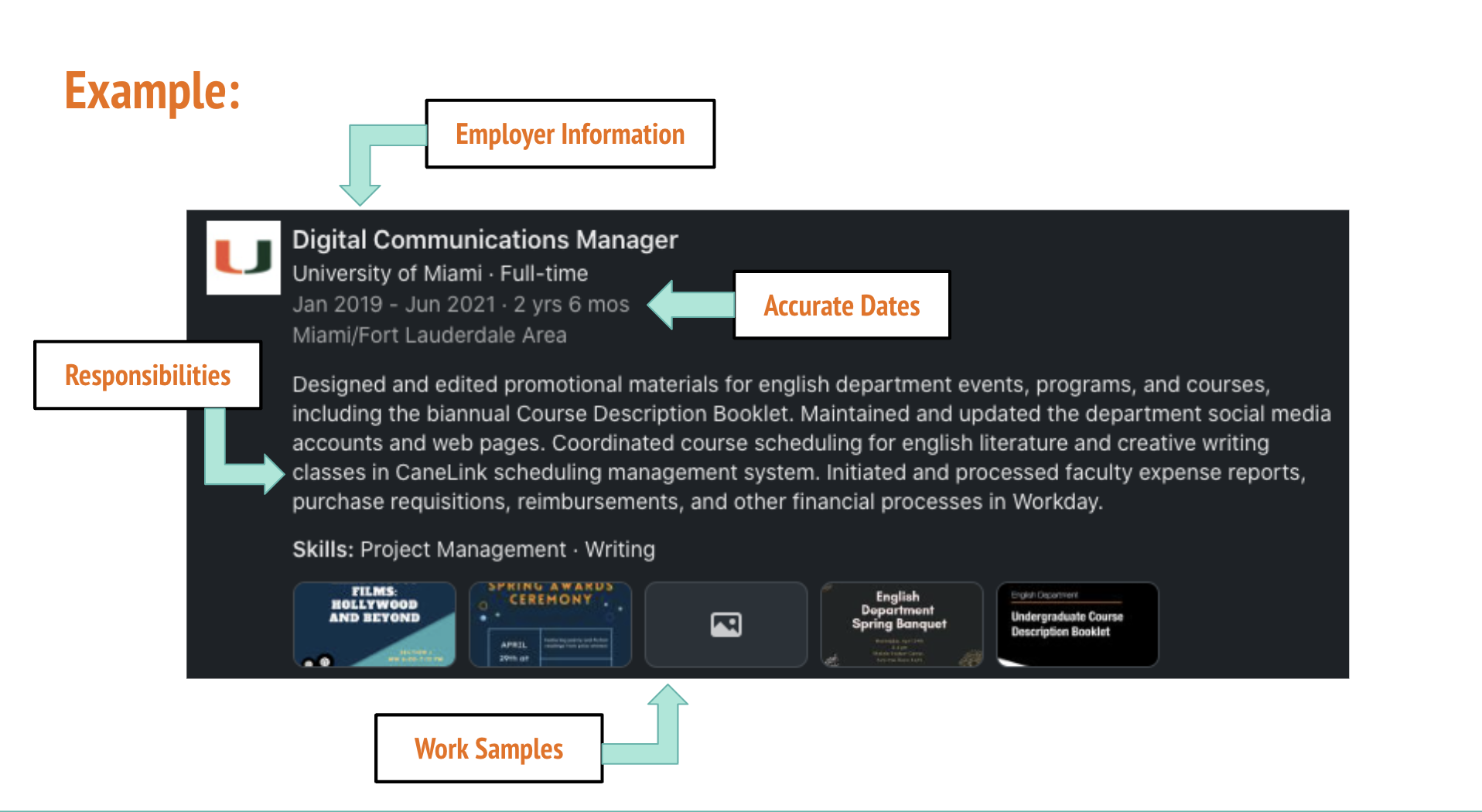Social media is an ever-changing beast — from rebrands to new platforms (I’m looking at you BeReal), it can be hard to keep up. But it doesn’t always have to be that way. For example, LinkedIn has remained a mighty force in the online professional networking game.
So how do you harness that networking power? Maybe you’re completely new to the game with no account or online presence yet. Or maybe you’ve created a profile and you’ve connected with peers, but you’re not sure how to improve your LinkedIn experience. Wherever you are in your LinkedIn journey, we’ve got you covered.
What is LinkedIn? And why does it matter?
Do a brief search on the World Wide Web and it’s clear: LinkedIn is No. 1 in the scope of online networking. So why not use that to your advantage?
Just look at their About page which highlights their more than 930 million members connecting from over 200 countries and territories globally. And that number keeps growing each year. LinkedIn was created to help people around the world find jobs, connect with like-minded peers and share professional updates.
Additionally, it’s expanded in recent years to include other resources to help you strengthen your career. (This includes the LinkedIn Skill Assessments, which we discuss later on and can help you demonstrate proficiency in important job-related skill sets.)
Beyond what LinkedIn can add to your certifications, your profile also builds trust and credibility to your resume. And that will always be a net positive for your professional career path.
Are you sold yet? If so, buckle up and get ready to become a LinkedIn master with these 4 best practices to improve your networking:
1. Put your best foot forward with your profile
Your profile is your first proverbial “foot in the door.” Whether it’s accurate or up-to-date, it’s going to set the tone for how people online perceive you professionally. That’s why if nothing else, you should ensure your profile shows you at your best.
Need help with that? Here are some tips to get you started:
Include a professional profile picture
- Keep it simple and professional. Always remember, this isn’t a personal social media page — this is for potential recruiters, hiring managers and peers.
- You should be the only person in the photo. Much like a dating profile, you don’t want a potential viewer to struggle to find you in a crowd. You’re the focus, so let the picture show that.
- Follow professional headshot guidelines. Need more guidance? Indeed has a comprehensive guide here.
- Avoid busy backgrounds and patterns. Much like a photo of you in a crowd, “loud” backgrounds and patterns can disrupt the focus of the headshot. Keep the polka dots minimal, and you should be fine.
- Tip: Don’t know where to find a good picture? If you have a headshot from your job, go ahead and use that.
Don’t leave your profile’s banner photo blank
You may be thinking, “Ugh! This is a professional networking site. Why are there so many pictures to update?” Don’t worry. This is the last one — I promise! It’s also pretty low stakes. (You don’t even have to be in it!)
Here’s some inspiration to get you started:
- Use a generic landscape photo. My banner photo is one I took of my alma mater’s campus!
- Don’t include people as the focal point. No need to post a group photo. It’s landscape format and it works to use landscapes.
- Choose something connected to your field or resume. Are you a writer? Select a picture of a pen and paper. (Yes, thankfully, it really is that simple.)
- You can post a picture of the location you’re based in. If you still haven’t found the right picture, take a look at landscape photos of the location you work from. I’m in Boston, so a downtown cityline photo would be a great option!
Banner photo examples
Example 1:

(My alma mater’s campus)
Example 2:

(The Boston skyline)
Profile summary
Last, but not least, it’s time to update your profile summary.
For this section, you’ll want to avoid writing your personal life story — that’s for your future memoir and you don’t want to give that away for free.
Use the About summary section to tell your in-progress career journey concisely. If possible, keep it to 2-4 sentences for easy readability. (In the film biz, this would be called your elevator pitch.) A huge paragraph can overwhelm someone just trying to skim your profile.
And if you’re really lost, feel free to just highlight your title at your current job.
Below are 3 examples to consider:
- For a recruiter summary: Actively recruiting for all things HR, Marketing and more! Interested? Let’s chat!
- For a marketing specialist summary: Marketing specialist with excellent written, verbal, and interpersonal communication skills — and a keen attention to detail. Creative content strategist able to embrace these strengths both independently and in a team setting.
- For a creative director summary: Creative Director at Job, Inc. (Seriously, you can keep it that short.)
Subscribe to
The Content Marketer
Get weekly insights, advice and opinions about all things digital marketing.
Thank you for subscribing to The Content Marketer!
2. Ensure your profile content is up-to-date
This is the meat and potatoes of your profile; the section where you list your resume out for the world.
The Experience section
For this portion you want to do 3 things:
- Add any new employer information.
- Ensure all past and current information is accurate.
- Include job responsibilities.

Additional resume tips
- For past roles, these should be concise, active statements in the past tense.
- For current roles, these should be concise, active statements in the present tense.
- Use engaging action verbs. Highlight any accomplishments achieved in each position.
Examples of action verbs include:
- Collaborate
- Develop
- Produce
- Ideate
- Implement
- Improve
Skills section
Beyond the Experience field, there is a Skills section to fill out. Here are the guidelines:
- Only list skills that are important and relevant to your field/roles.
- Don’t include too many.
- If any are redundant or irrelevant to your current/intended field, remove them. Adding writing and copywriting can be overkill — just stick to one.
Some examples of skills to include are: Research, writing, social media, content strategy, project management, etc.
Education details
If you have an associate’s degree, bachelor’s degree or graduate degree, put them in your profile! Similarly, if you have certifications, you should also add those. LinkedIn also has Skill Assessments, which you can explore and add to your page.
3. Grow your network
This is one of the easiest ways to improve your LinkedIn profile. Take advantage of the “My Network” page. After all, it’s there for a reason.
Unlike other social media sites, your LinkedIn network should include as many people as possible. This means connecting with fellow alumni of your university, old co-workers, current co-workers and those in your social circle.
You can also use it to literally network. Is there a professional in your field who posts content you admire or enjoy reading? Send them a message or ask them to connect. They may not respond, but it could start a professional connection.
4. Engage with your network
Now that you’ve connected, it’s time to engage with your peers and other professionals. Your LinkedIn profile doesn’t exist in a vacuum and there are a ton of simple ways to interact with your network.
Have an incredible co-worker? Go to their profile and endorse the skills you see them excel at. This is a good practice to support the people you work with. They may even end up doing the same for you!
And this idea works for recommendations. If you have good rapport and experience at your job, don’t be afraid to ask for recommendations. If you have a great working relationship with your manager or a co-worker (and trust their writing skills), ask if they’ll give you a personalized recommendation on LinkedIn.
Need inspiration? Here are some other ways to engage:
Start conversations: Create and share posts
Have a professional accomplishment? Post about it!
Some post examples include:
- A new position.
- A promotion.
- Published/public content (e.g. I could share this Brafton.com piece).
Don’t be afraid to reshare content.
If your company (or related account in your field) posts an exciting update and you want to share the news, don’t hesitate to do so! You can also reshare with a comment if you want to add your two cents.
Another example is if someone posts an extremely helpful guide related to your field. For me, that may be a comprehensive how-to article for writing about technology trends. If this is a resource that helps me, I can vouch for it and reshare it to my network.
Like and comment on others’ posts — and always keep it professional!
Embrace the networking aspect of LinkedIn. Like others’ posts and/or make a comment if you want to send a positive message.
However, always remember that this is a professional networking platform. Others can see your activity on their feed and on your profile. Don’t like, comment or post anything that could be seen as unprofessional to your network.
After all, your connected network can see recent activity on their homepage. Similarly, your profile has an activity box that shows your recent comments, likes and interactions.
This may be common sense, but it’s still important to regularly check in and ensure all activity shows what you’d want a colleague, manager or potential hiring company to see.
Conclusion
OK, phew. We’re at this article’s finish line, and you’re prepared to enter the LinkedIn starting line.
It’s officially time to craft that eye-catching profile and enhance your online networking presence. Remember, LinkedIn is all about what you put into it — the more you engage, the better the results.
With these 4 best practices in hand, it’s time to go forth and improve your LinkedIn experience.
Ready, set, network!





